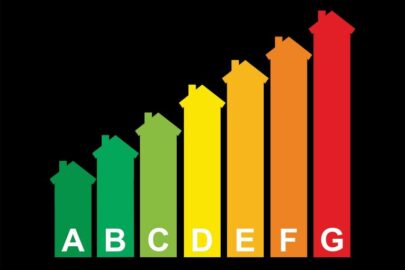As the government continues to be occupied by the fallout from the mini-Budget, the target to upgrade as many UK homes as possible to an Energy Performance Certificate (EPC) rating of C by 2035, increasingly risks being side-lined.
There is concern that the Covid pandemic followed in quick succession by the cost-of-living crisis has moved the prospect of a greener housing market further down the agenda.
We have already seen an indefinite delay to the Minimum Energy Performance of Buildings Bill, which requires landlords to upgrade their properties to a ‘C’-rated EPC for all new tenancies by 2025.
As we start to see interest rates rise and in turn mortgage payments, there is a real danger that the momentum the industry was starting to build around Green mortgages and EPCs could be lost.
These are interesting times however and while there is a school of thought that energy efficiency measures may take less prevalence, we could also see the opposite happen.
One thing the cost of living crisis has done is place ways to save energy and ultimately money at the forefront of people’s minds.
While energy efficiency improvements might be the last thing occupying those worst hit by rising mortgage costs, there may be other borrowers who instead of moving home, decide to invest now to save money in the long-run. It may well be therefore that the cost of living crisis marks a turning point in homeowners’ awareness about their property’s EPC.
A recent report from Santander, which surveyed more than 2,300 homebuyers and owners, found buyers are placing an average 9.4% premium on homes that have already been retrofitted. It also found the majority of estate agents – 79% – say they are seeing more buyers ask about energy efficiency than they were twelve months ago.
There was a trend during the Covid-19 pandemic for buyers to want a bigger garden or home office, yet energy efficiency is now cited as more attractive than these features as rising energy costs become a concern, according to its findings.
While buyers might be more inquisitive about energy efficiency homes, from a surveying perspective, this is still yet to trickle down into higher valuations.
It may well be that a more energy efficient home commands a higher price but this could be down to its features – such as new double glazing – as opposed to a direct result of its EPC rating.
Indeed, there is still work to be done, with Santander’s research finding that more than half – 58% – of respondents did not know what EPC stood for. A further three in five – 60% – did not know the EPC rating of the property they currently live in.
Santander’s research also correlates with recent findings from NatWest and S&P Global, which found that almost half – 40% – of consumers looking to buy a property in the next decade considered a property’s EPC rating a very important factor – a 10-percentage point increase year-on-year.
Its Greener Homes Attitudes Tracker found around half of homeowners stated the rise in the cost of living due to factors such as higher energy bills, food prices, fuel prices and interest rates had made them more likely to implement energy-saving measures over the next year.
NatWest’s findings also show almost two thirds – 68% – of UK homeowners now plan to upgrade their property over the next 10 years in a bid to reduce energy bills. This stat has grown over 10% since last summer.
Of course, both sets of research will have been carried out before the mini-Budget and recent market turmoil. Nevertheless, increased awareness by homeowners of EPCs is a significant first step in implementing change.
The homeowner market is not a one-tier system and, for some, the cost-of-living crisis might have the unexpected but beneficial consequence of making them think more about their home’s energy efficiency – marking a watershed moment for borrowers and the industry.
Simon Jackson is managing director of SDL Surveying
